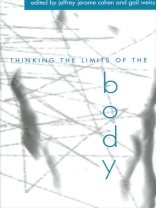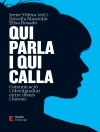Shows the inseparability of textuality, materiality, and history in discussions of the body.
This collection maps the very best efforts to think the body at its limits. Because the body encompasses communities (social and political bodies), territories (geographical bodies), and historical texts and ideas (a body of literature, a body of work), Cohen and Weiss seek trans-disciplinary points of resonance and divergence to examine how disciplinary metaphors materialize specific bodies, and where these bodies break down and/or refuse prescribed paths. Whereas postmodern theorizations of the body often neglect its corporeality in favor of its cultural construction, this book demonstrates the inseparability of textuality, materiality, and history in any discussion of the body.
Spis treści
Acknowledgments
Introduction: Bodies at the Limit
Jeffrey Jerome Cohen and Gail Weiss
PART I: HORIZONS
1. Histories of the Present and Future: Feminism, Power, Bodies
Elizabeth Grosz
2. The Body as a Narrative Horizon
Gail Weiss
PART II: DERMAL BOUNDARIES
3. Cutups in Beauty School
Linda S. Kauffman
4. Deep Skin
William A. Cohen
PART III: RACIAL EDGES
5. Ontological Crisis and Double Narration in African American Fiction: Reconstructing Our Nig
Laura Doyle
6. Parallaxes: Cannibalism and Self-Embodiment; or, The Calvinist Reading of Tupi A-Theology
Sara Castro-Klar´en
PART IV: DIS-ABLING ALLIANCES
7. Making Freaks: Visual Rhetorics and the Spectacle of Julia Pastrana
Rosemarie Garland-Thomson
8. Critical Investments: AIDS, Christopher Reeve, and Queer/Disability Studies
Robert Mc Ruer
PART V: LIMINALITIES
9. The Inhuman Circuit
Jeffrey Jerome Cohen
10. Mourning the Autonomous Body
Debra B. Bergoffen
About the Contributors
Index
O autorze
Gail Weiss is Professor of Philosophy and Human Sciences at the George Washington University. She is the coeditor (with Jeffrey Jerome Cohen) of Thinking the Limits of the Body, also published by SUNY Press, and (with Dorothea Olkowski) of Feminist Interpretations of Maurice Merleau-Ponty.












